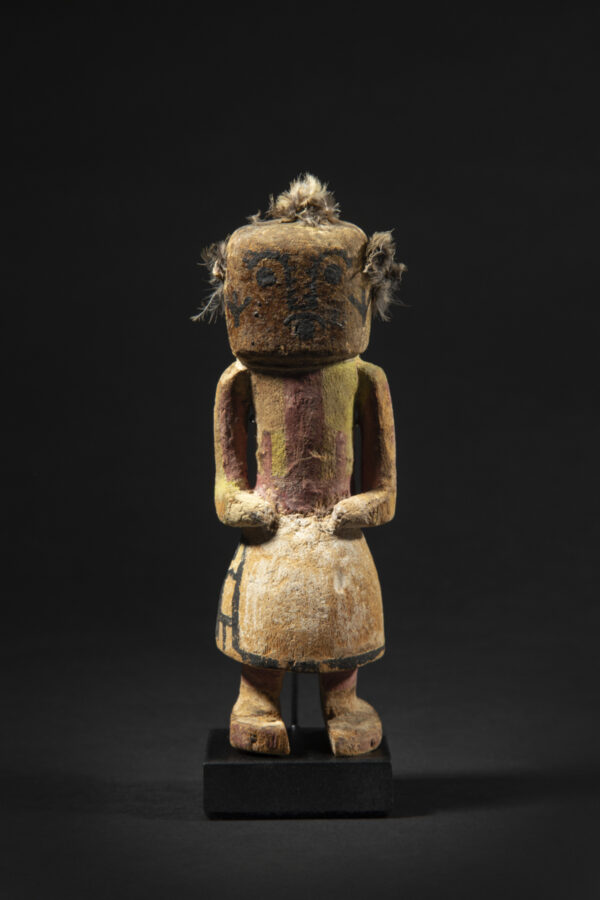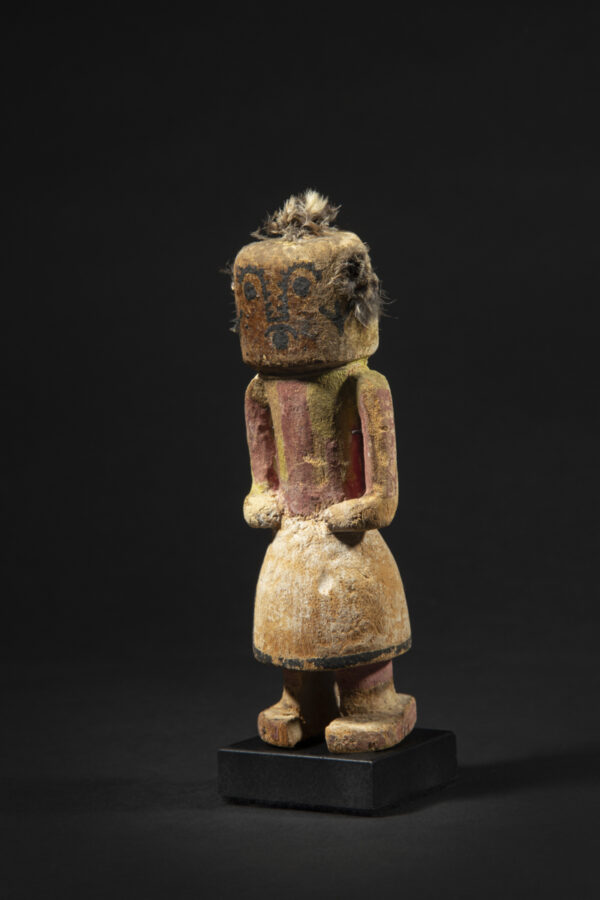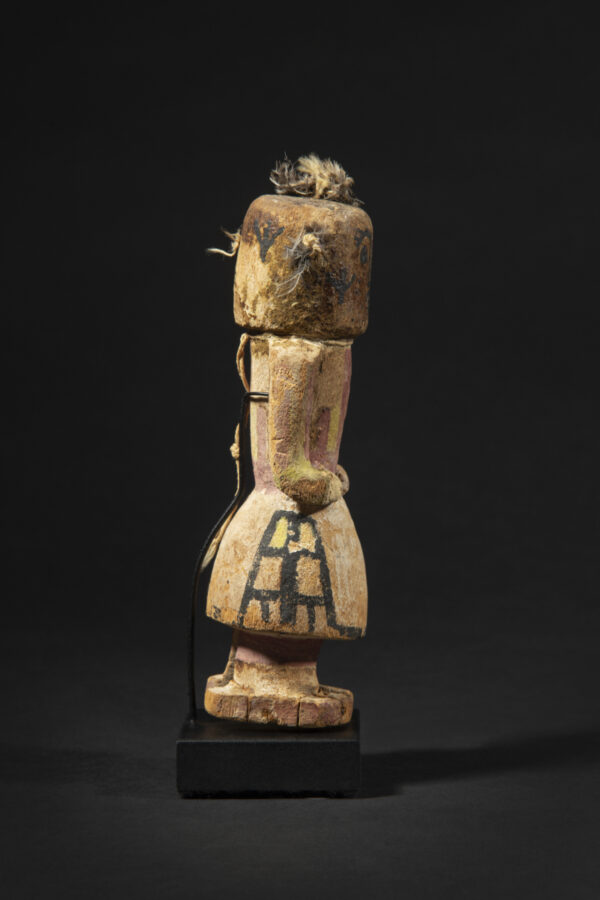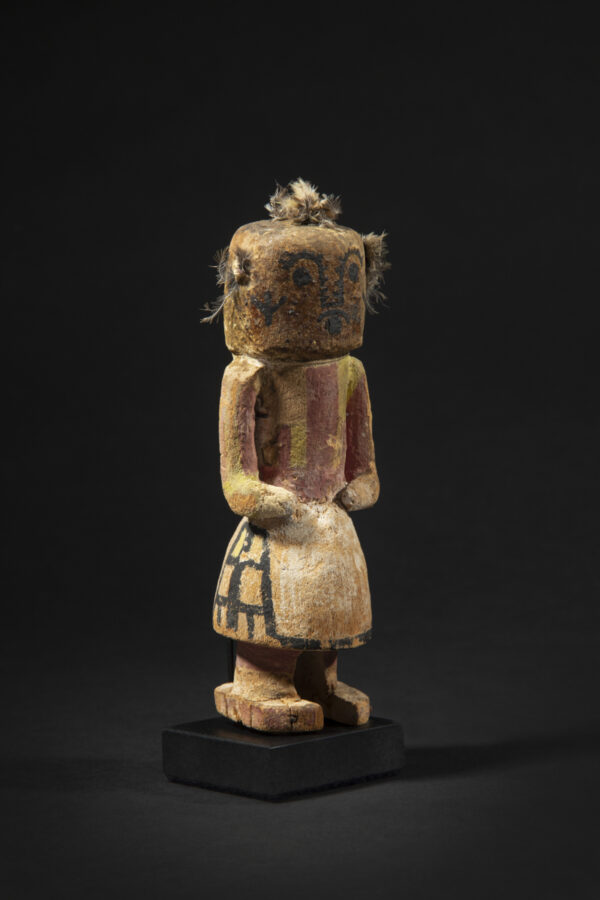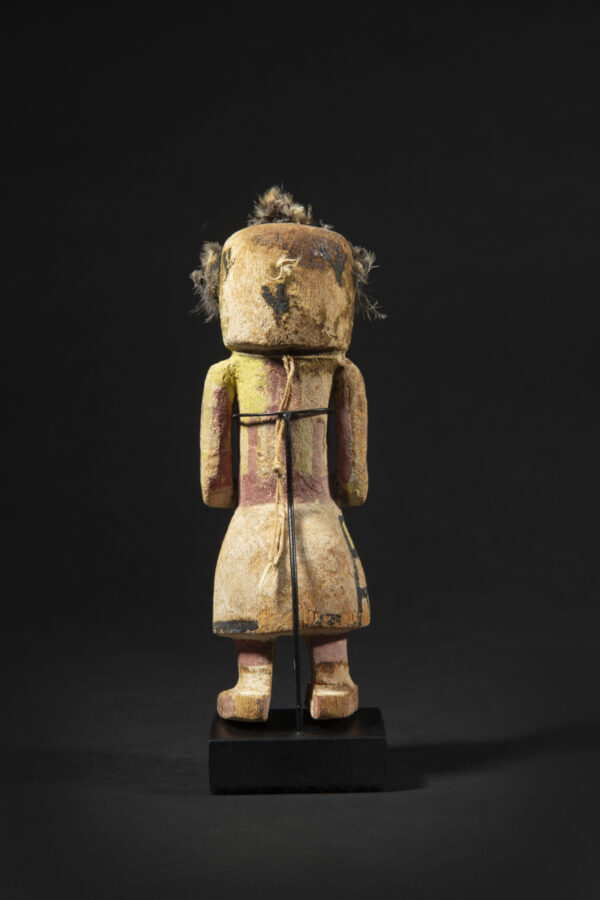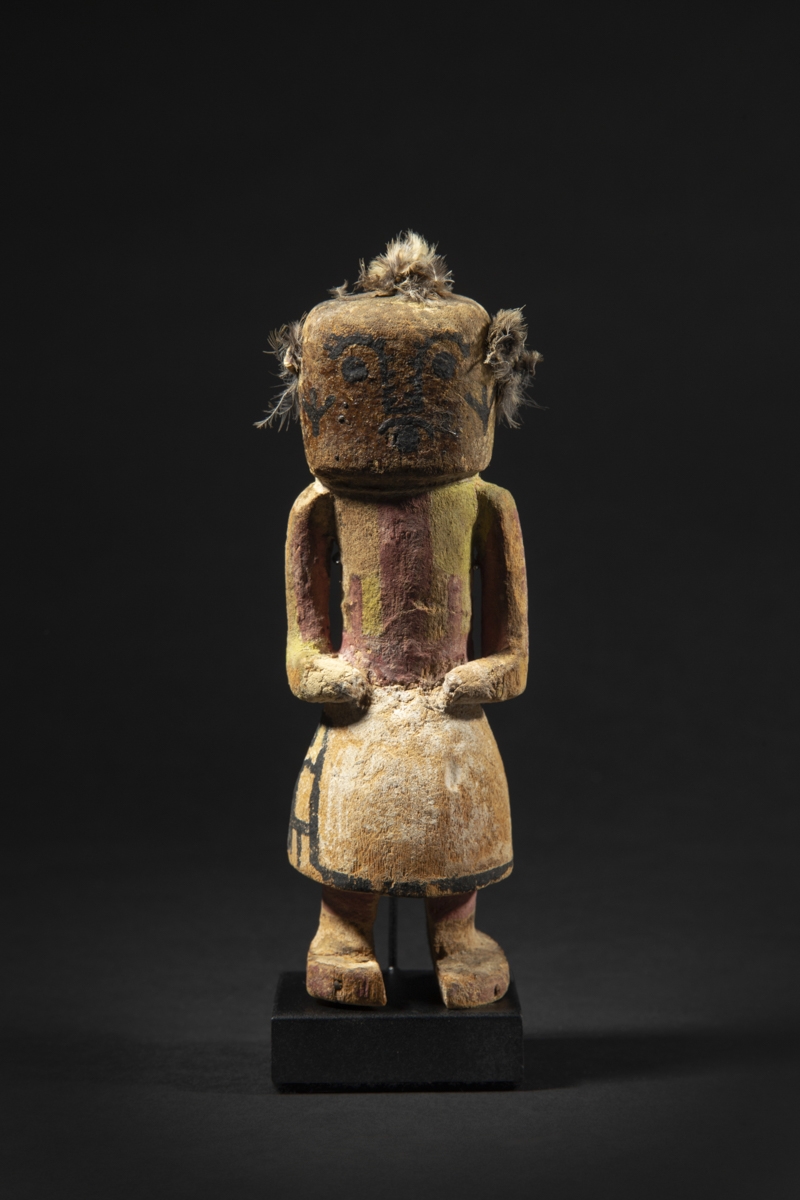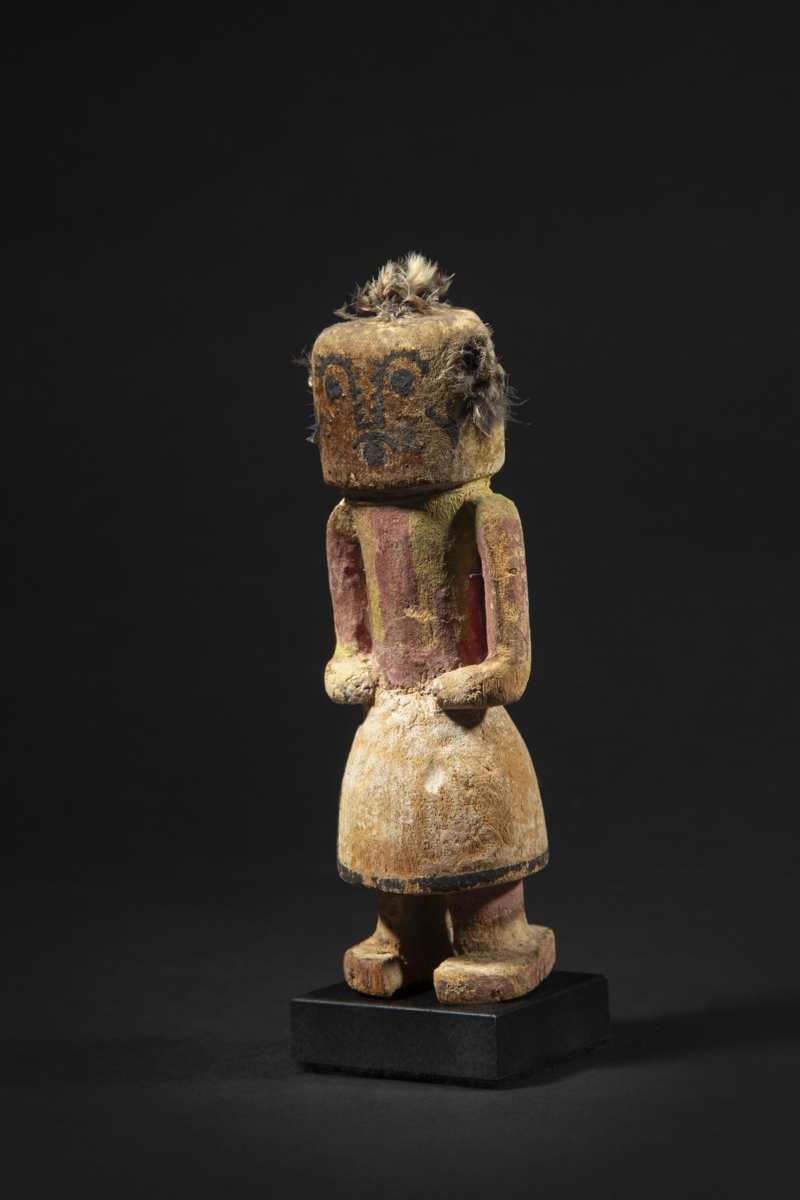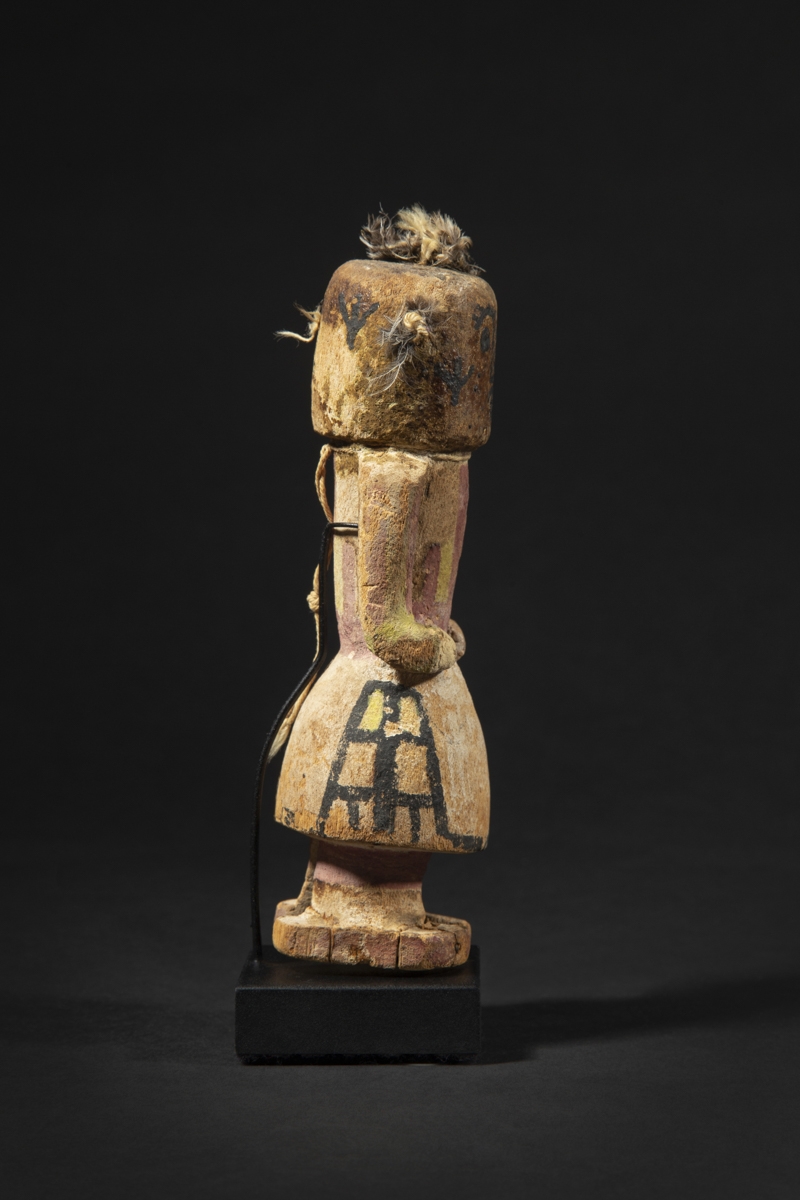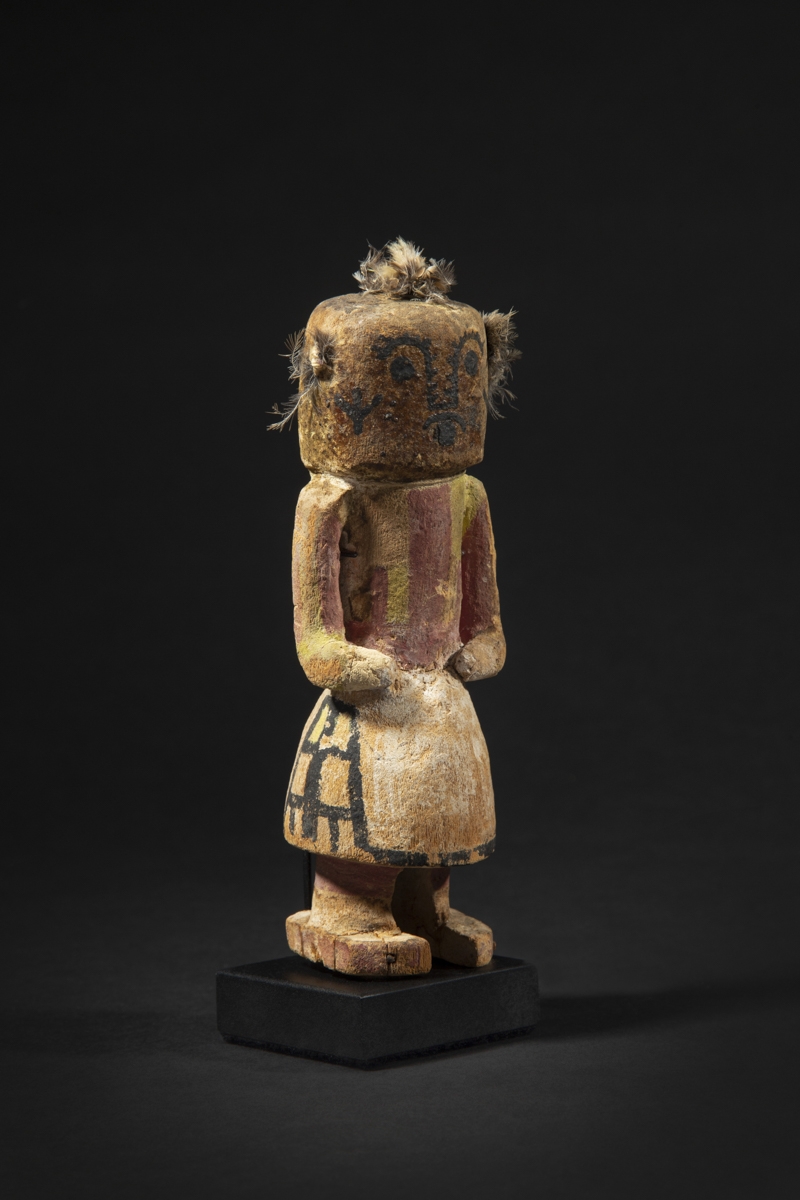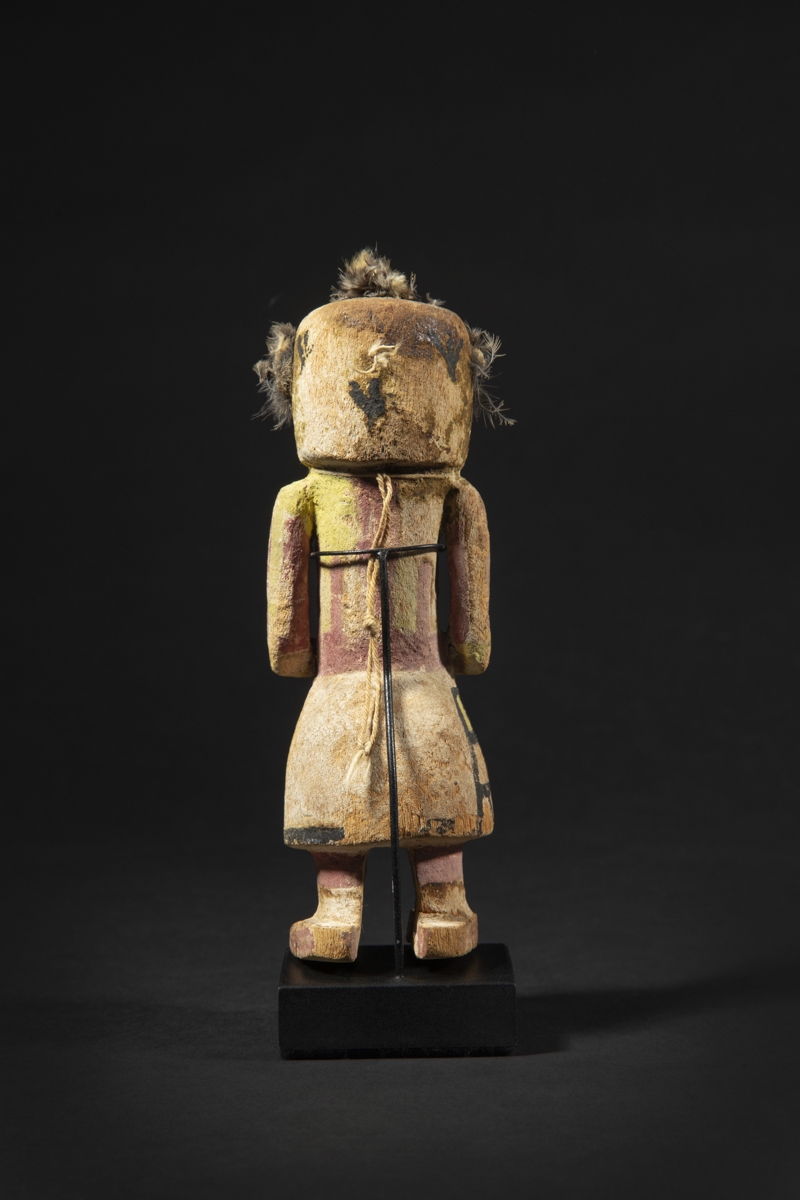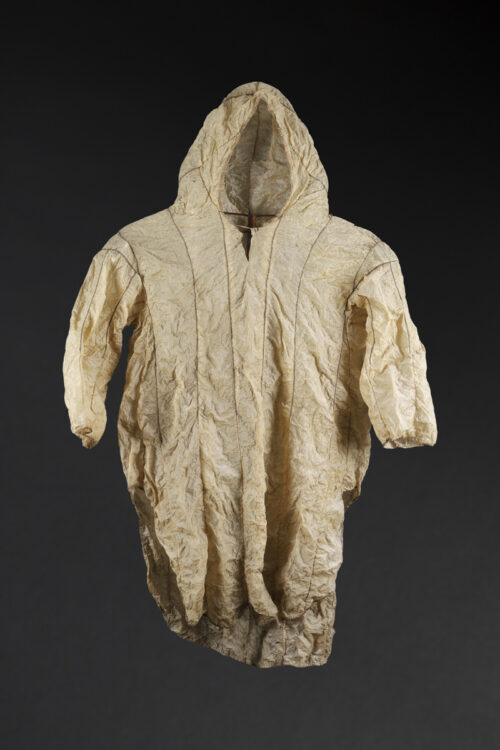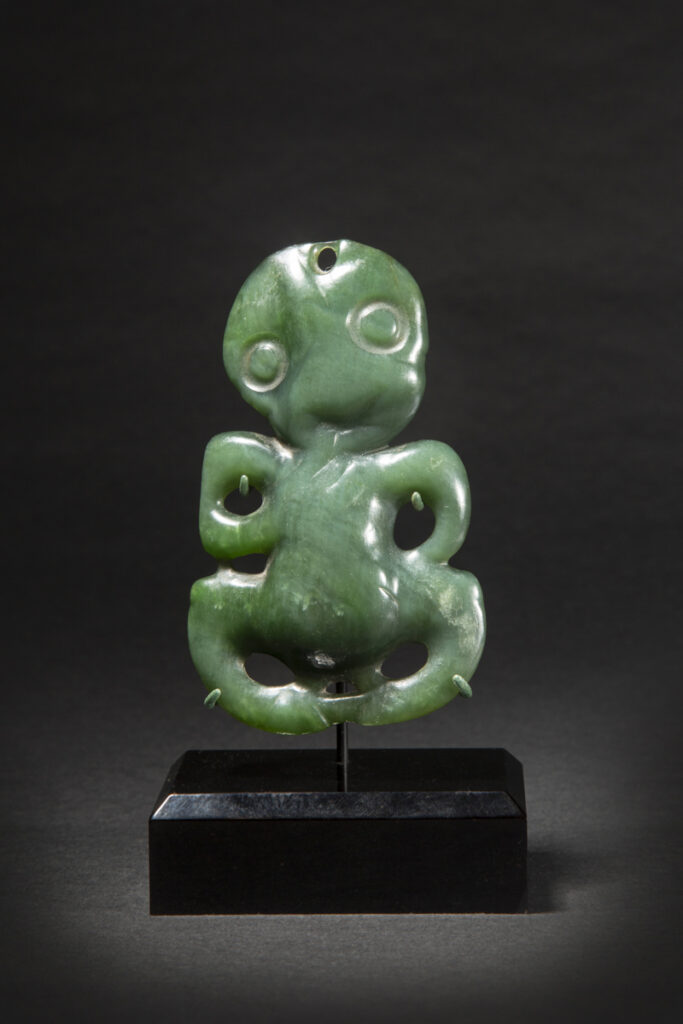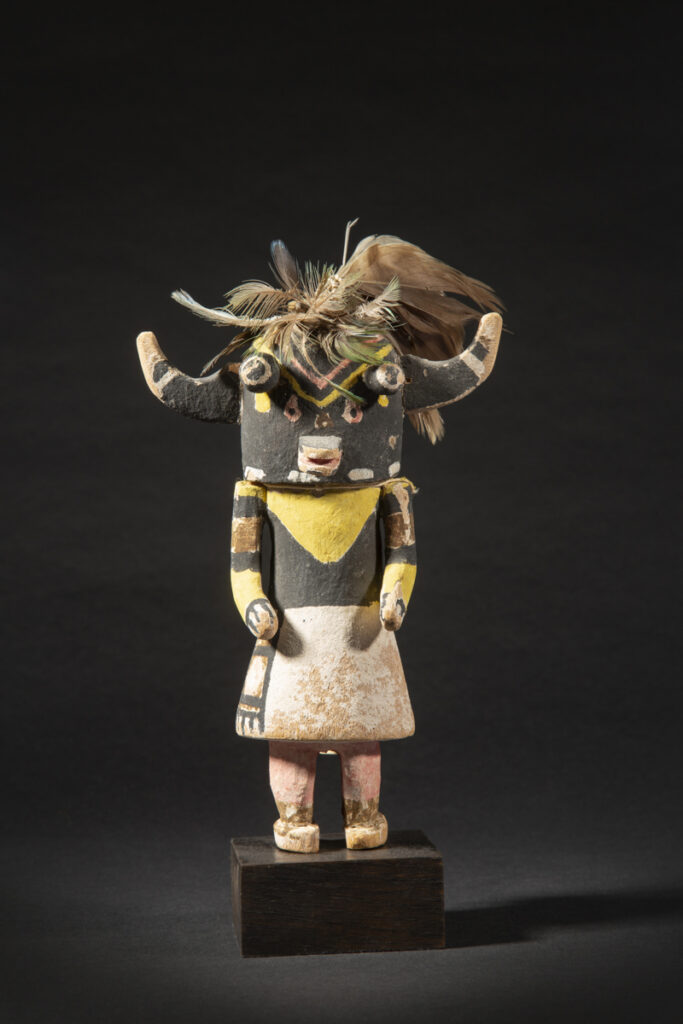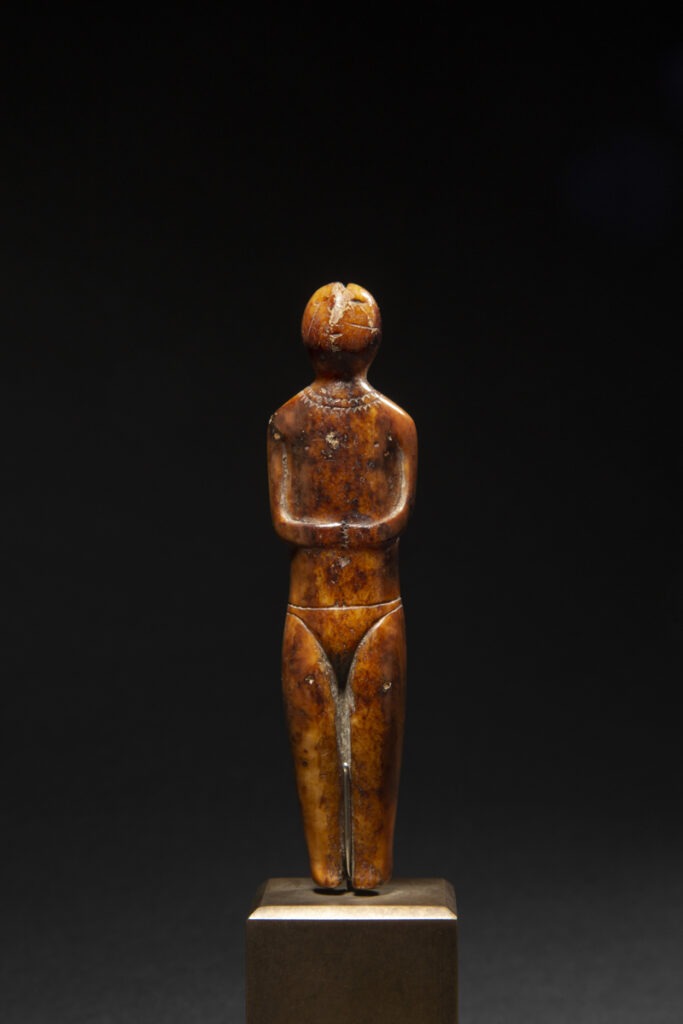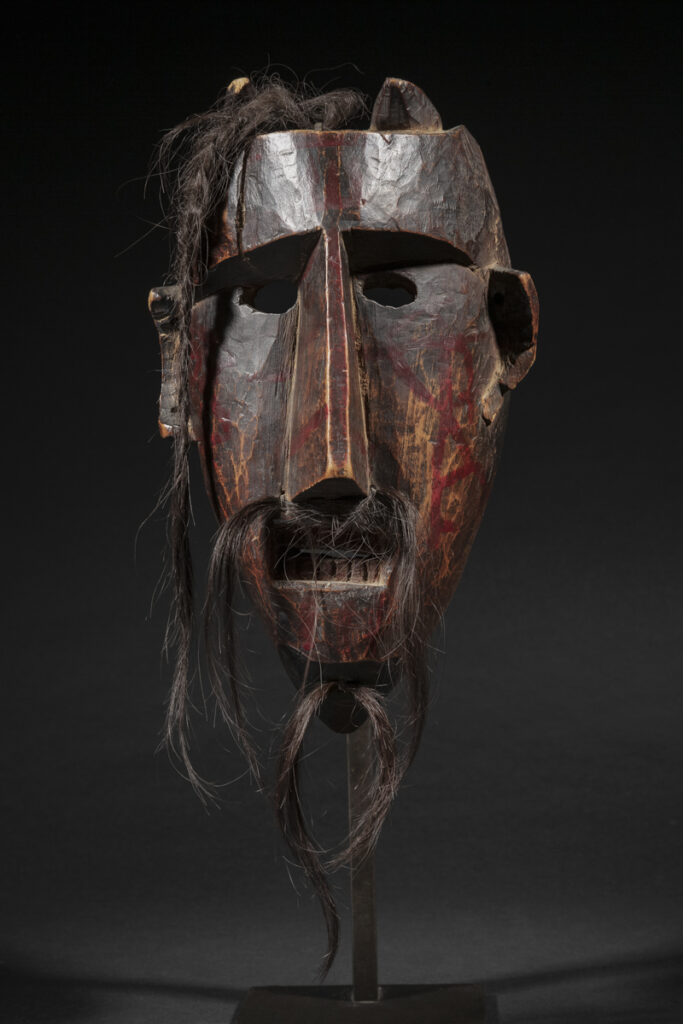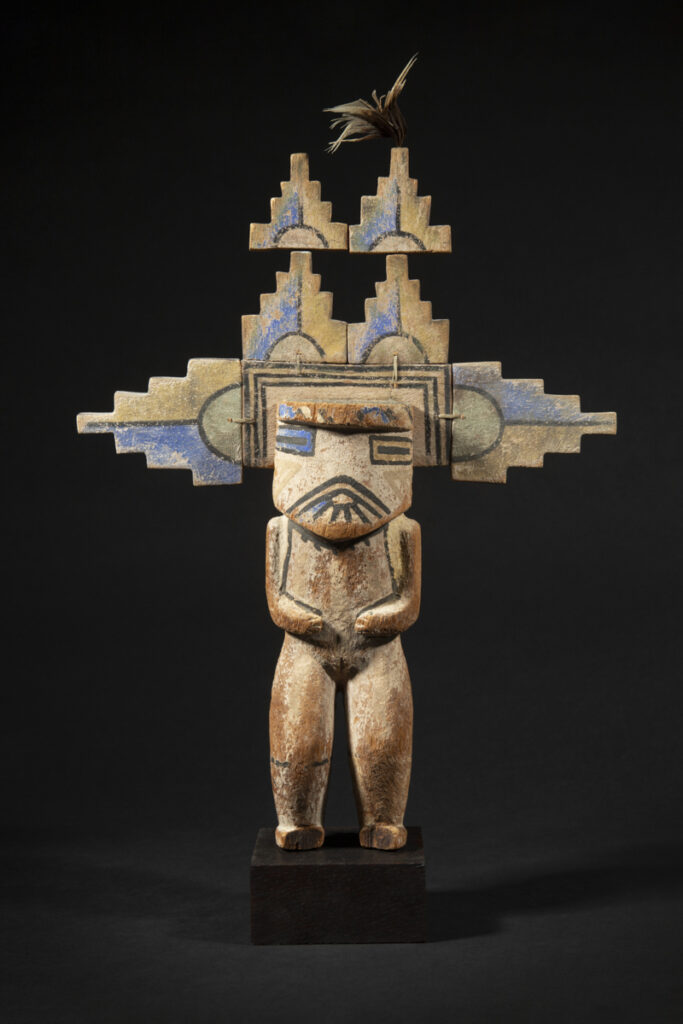North America | Arizona
Katsina Doll
Arizona
Qöqöle Katsina
Hopi
Circa 1900-1920
Carved wood (cottonwood root) and pigments
Height: 14 cm – 5 ½ in.
Provenance
Ex collection John Molloy, Santa Fe
Ex private collection, New York
Qöqöle Katsina doll 14 cm / Galerie Flak
Price on request
Katsina dolls (or kachina) represent spirits or gods from the pantheon of the Pueblo peoples in the American Southwest. Given to children, Katsina dolls constituted a pedagogical tool allowing them to familiarize themselves with the spiritual world and perpetuating knowledge of the founding myths on which their society was based.
Qöqöle Katsina, as depicted in these two examples, belongs to both the Clown and Chief Katsina (Mong) categories. On the Third Mesa, Qöqöle appears during the Soyal ceremony and participates in the ritual by giving offerings of sacred cornmeal at the entrance of the kiva. On the other two mesas, Qöqöle makes an appearance four nights before the Powamu Dance. During the preliminaries of the ceremony, he promises good harvests and offers gifts to children. This has led non-Hopis to give Qöqöle the nickname of Santa Claus Katsina! True to his clown nature, Qöqöle is known for all kinds of pranks, such as imitating women's dances or squatting on the floor and pretending to play marbles in the middle of the ceremony.
The color of Qöqöle's mask varies depending on the mesa and ceremony: it is white on the First Mesa, yellow on the Second, and black on the Third. Based on this information.
Qöqöle Katsina, as depicted in these two examples, belongs to both the Clown and Chief Katsina (Mong) categories. On the Third Mesa, Qöqöle appears during the Soyal ceremony and participates in the ritual by giving offerings of sacred cornmeal at the entrance of the kiva. On the other two mesas, Qöqöle makes an appearance four nights before the Powamu Dance. During the preliminaries of the ceremony, he promises good harvests and offers gifts to children. This has led non-Hopis to give Qöqöle the nickname of Santa Claus Katsina! True to his clown nature, Qöqöle is known for all kinds of pranks, such as imitating women's dances or squatting on the floor and pretending to play marbles in the middle of the ceremony.
The color of Qöqöle's mask varies depending on the mesa and ceremony: it is white on the First Mesa, yellow on the Second, and black on the Third. Based on this information.
Explore the entire collection
